


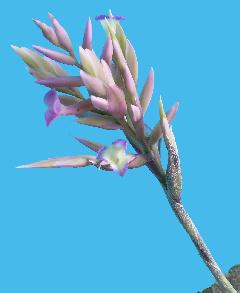
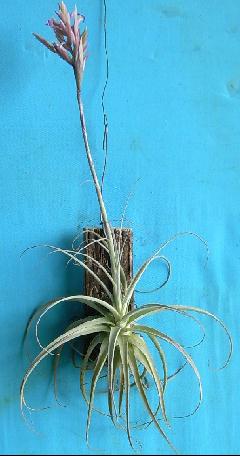
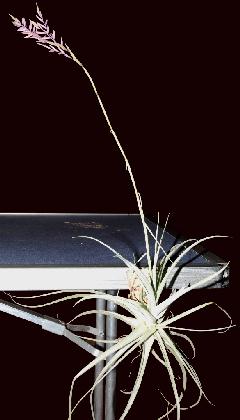
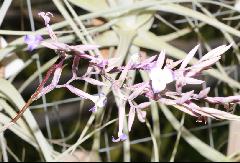
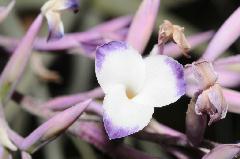


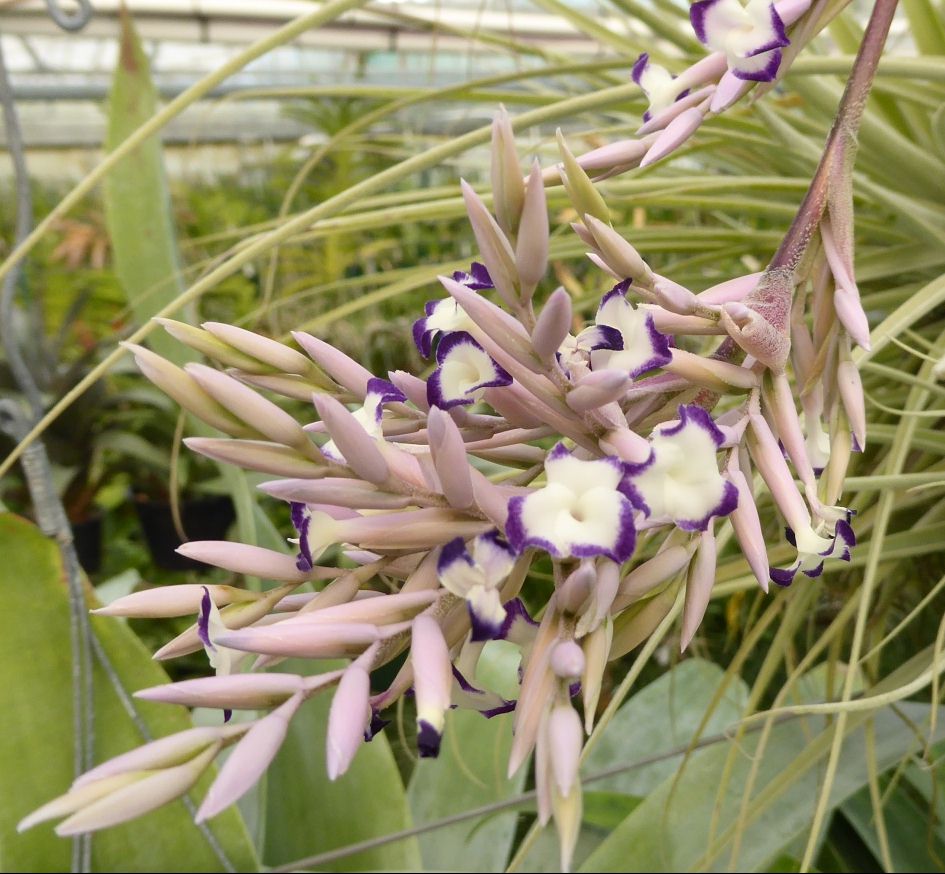
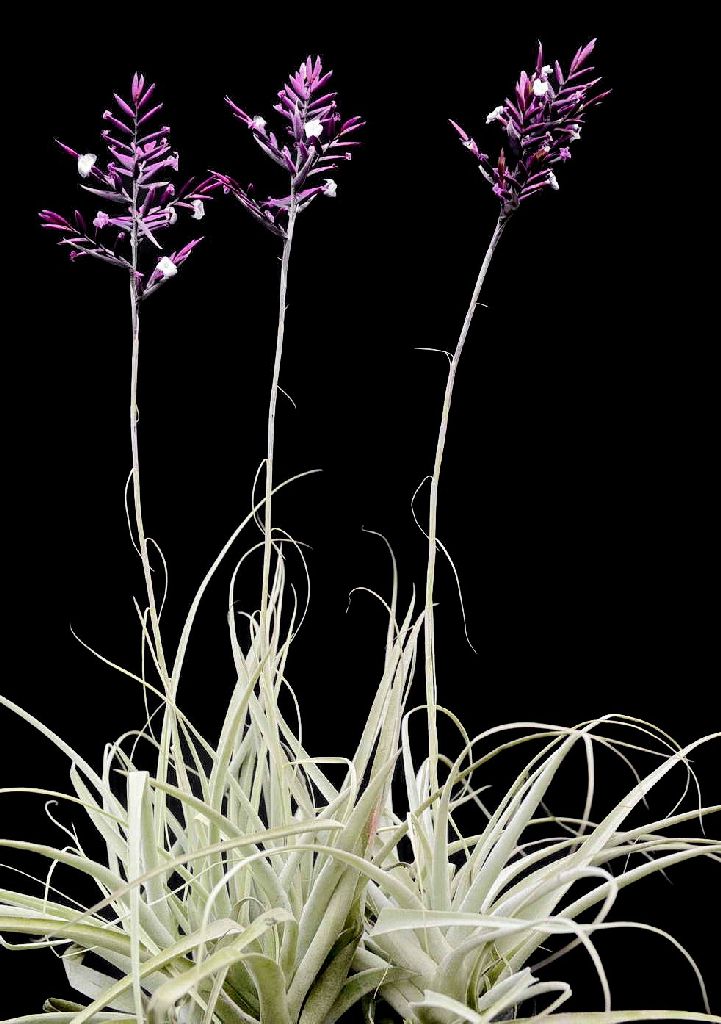

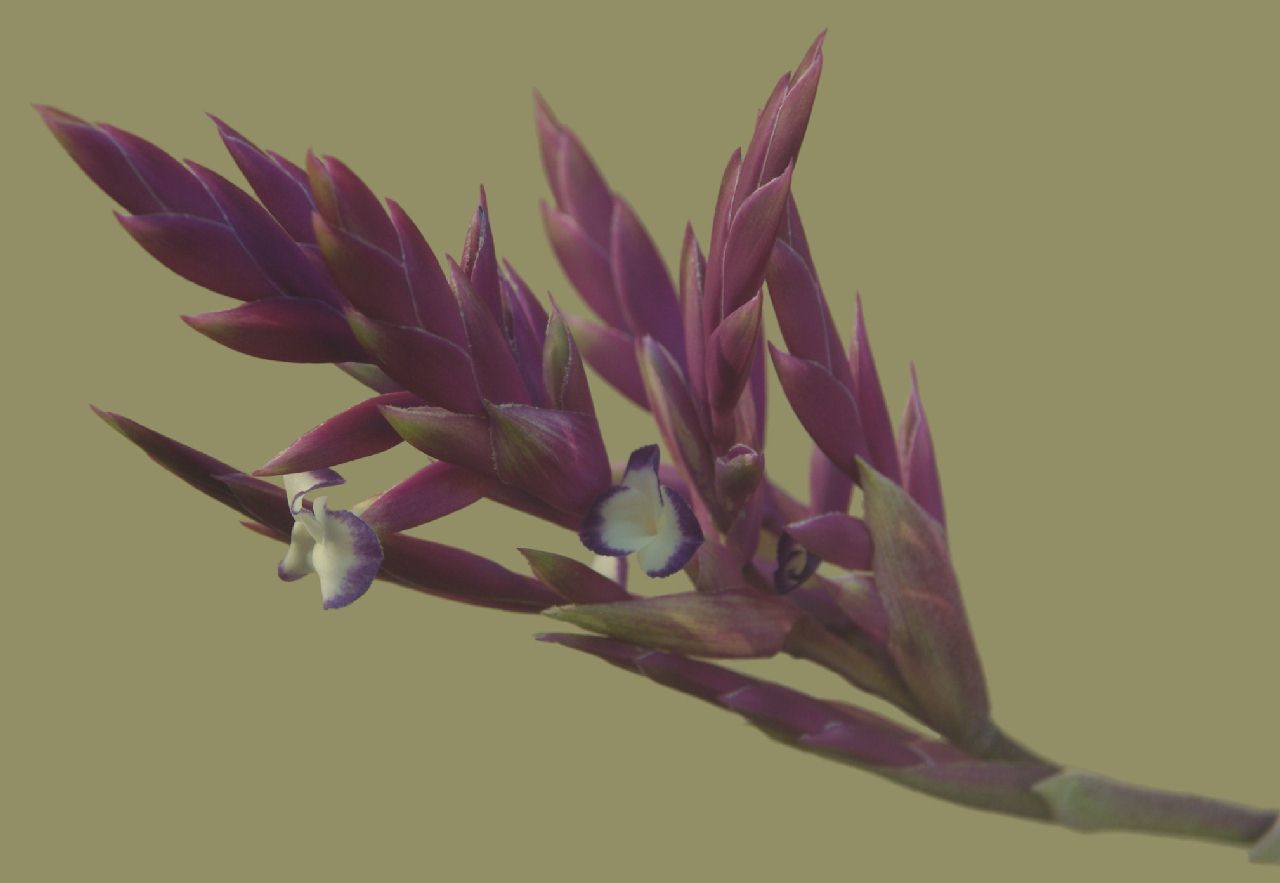
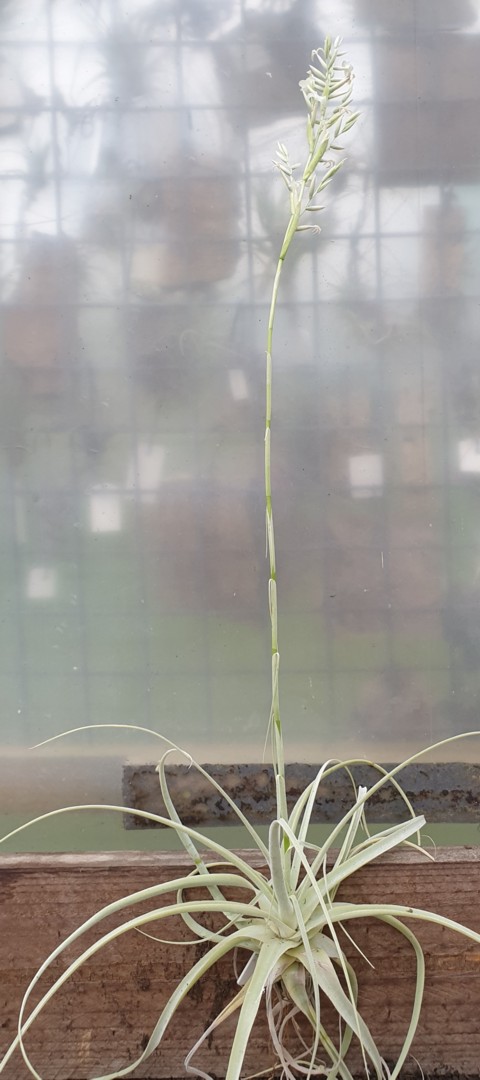

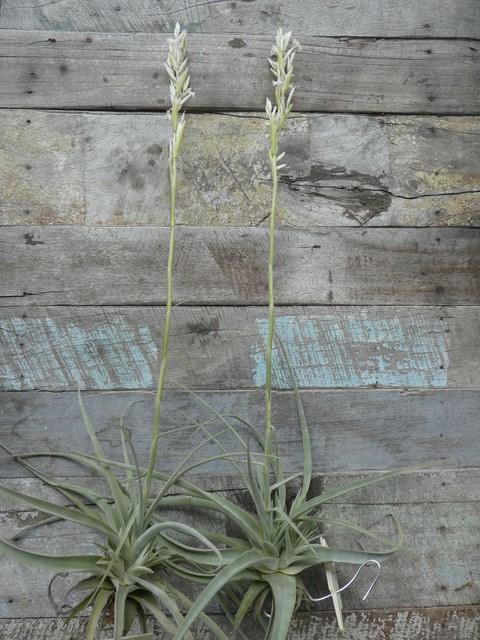


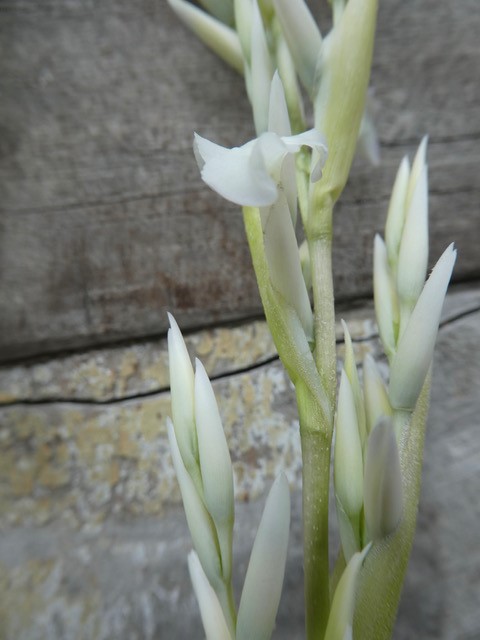

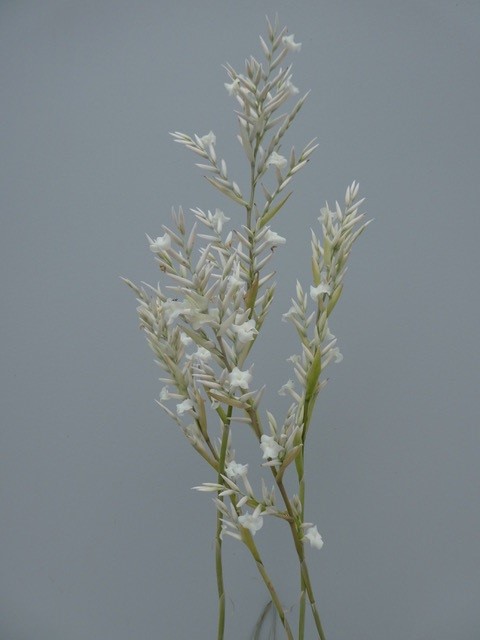

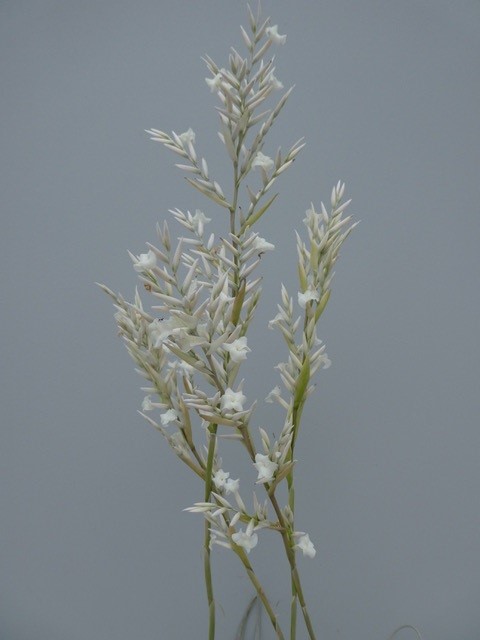


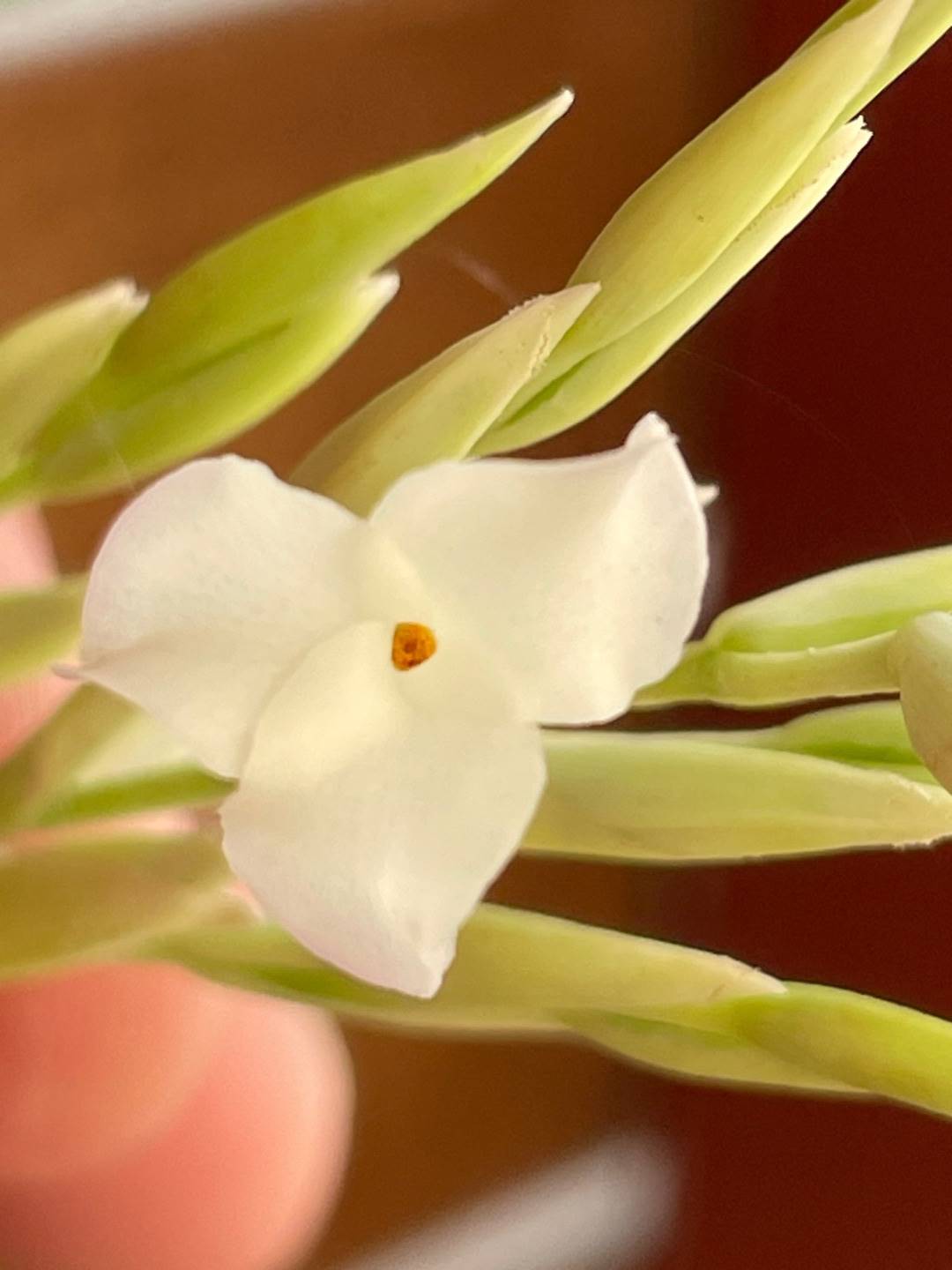
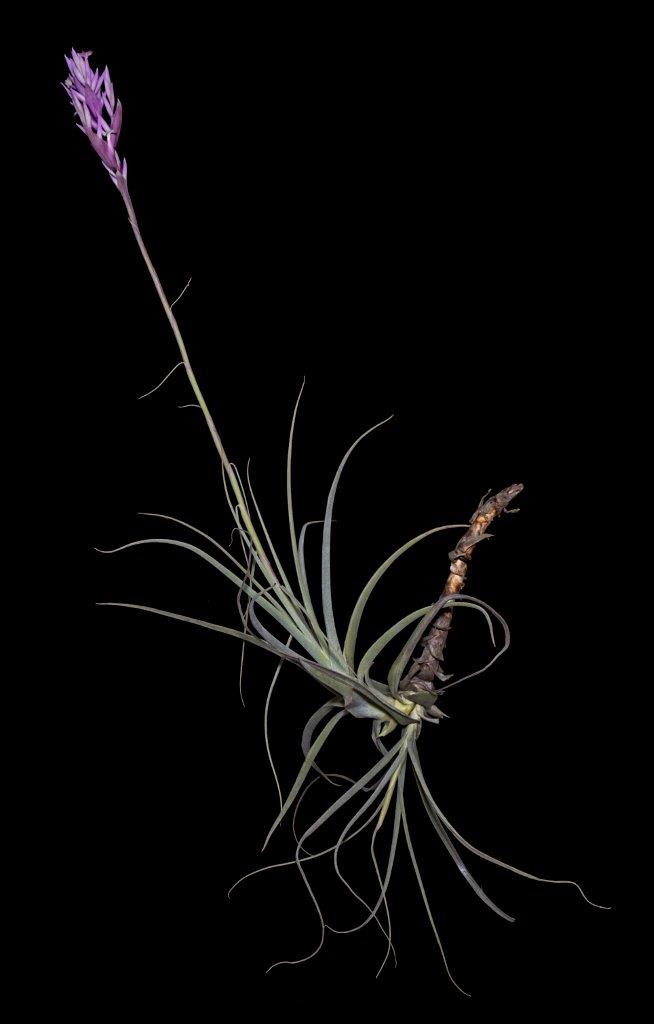
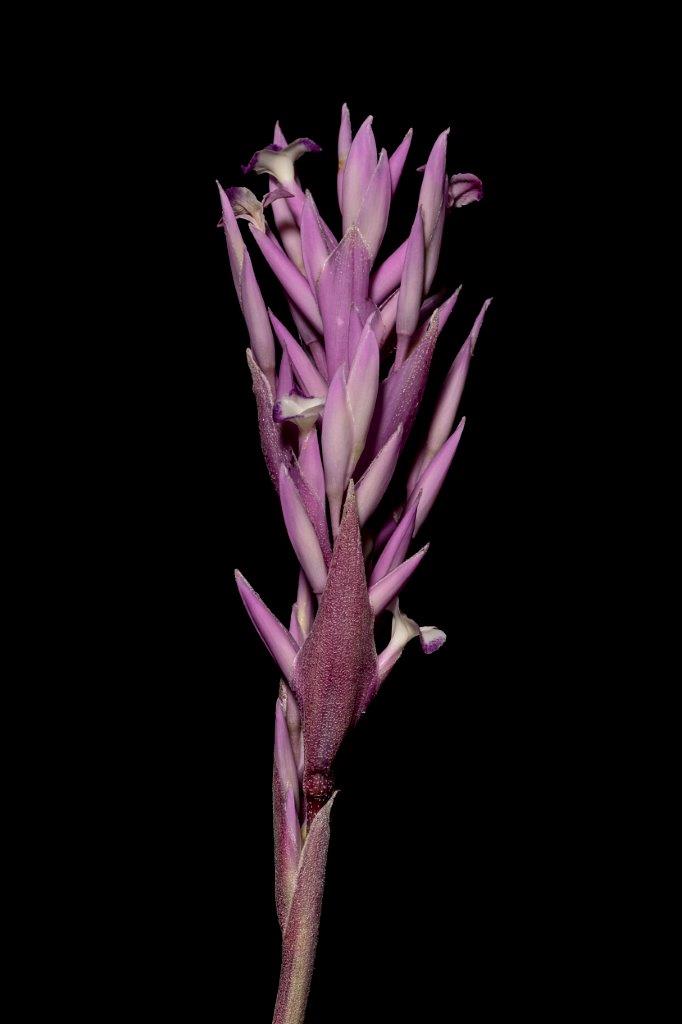


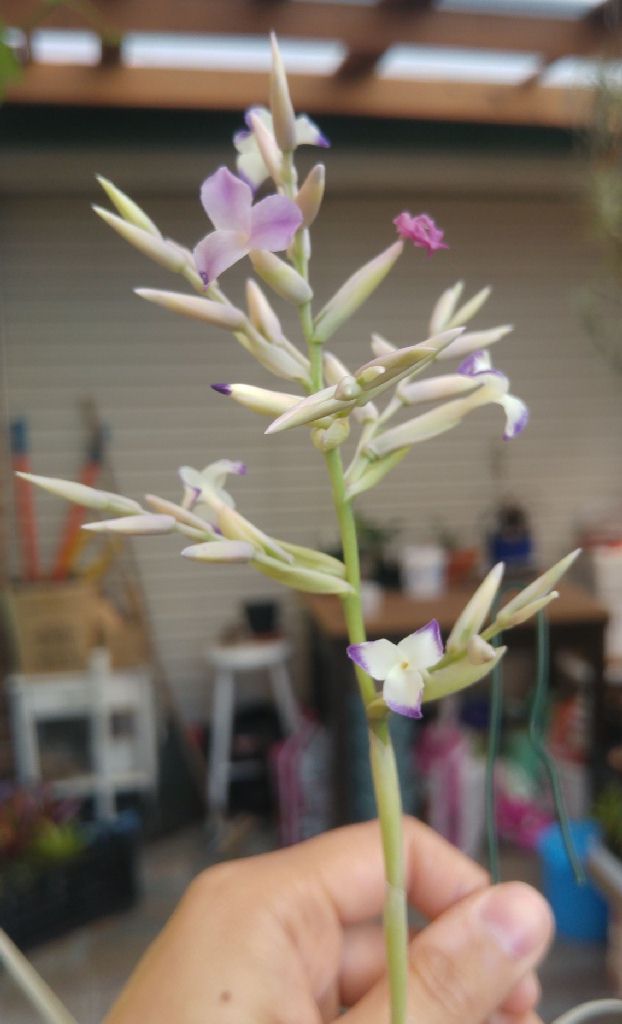

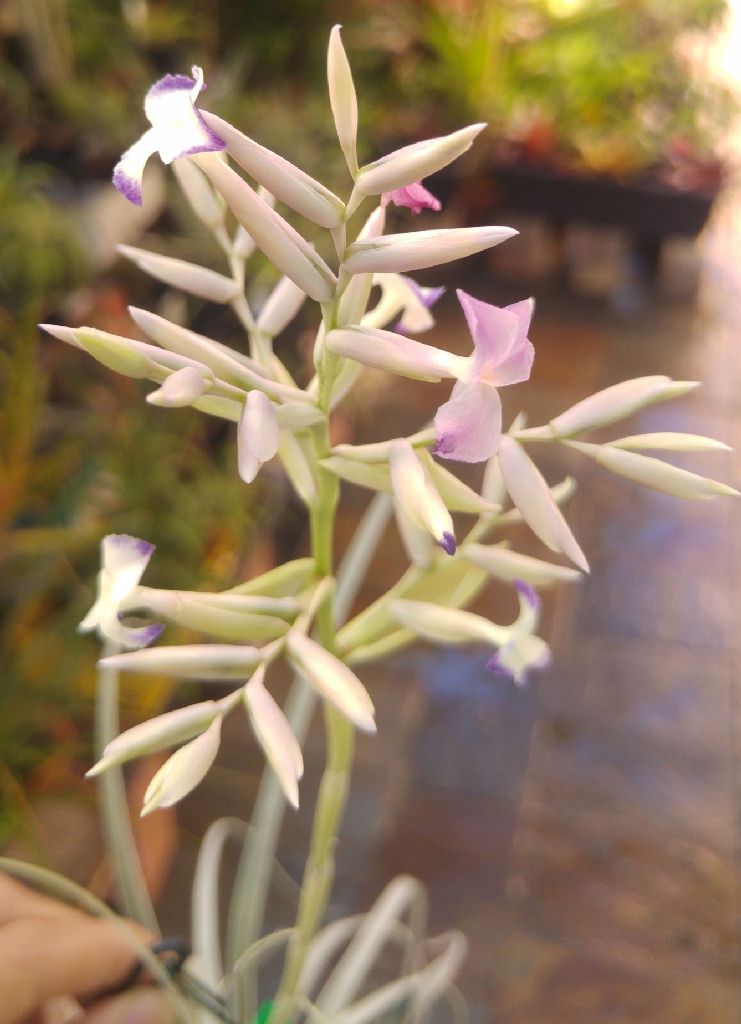
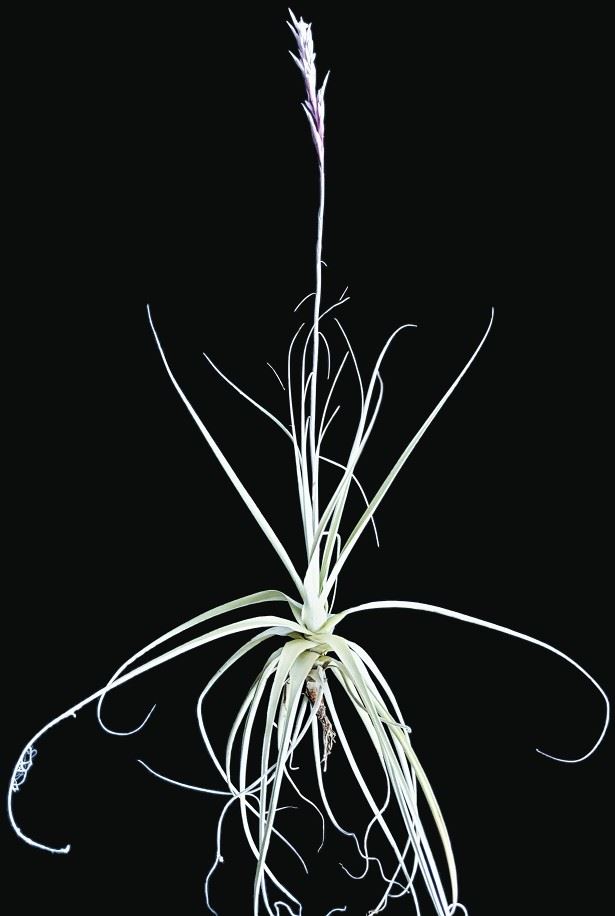

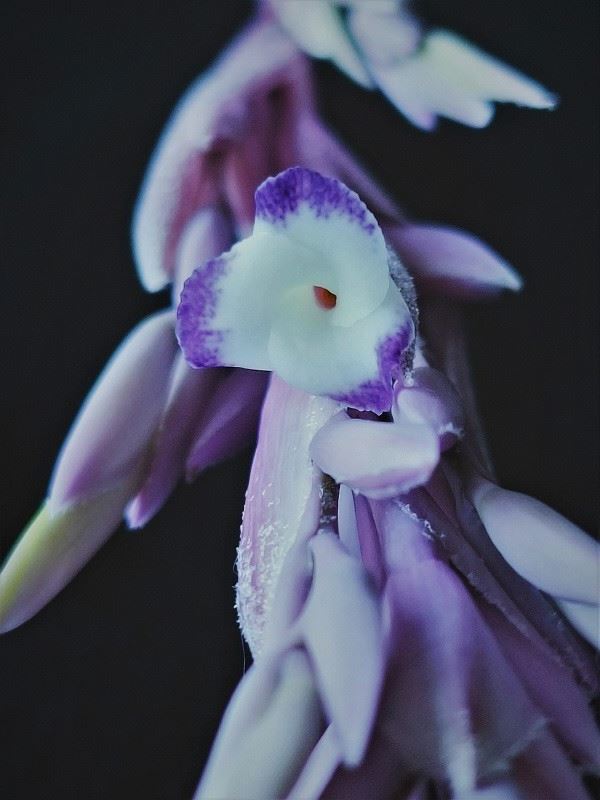
Peter Tristram 02/18 ... "In nature there are Pacific coastal plants with succulent, relatively short leaves generally regarded as purpurea and mountain plants, usually epiphytic, with long, lax, softer leaves that are thought to be straminea.
Then there is cacticola, which I have seen growing with straminea in the Cochabamba area of northern Peru. You also find what could be purpurea in the high Andes and many in-betweeners.
Interestingly none of the plants with distinct branches with more imbricate fb (usually lax after anthesis) that we tend to call cacticola, are fragrant, whereas all of the purpurea and straminea forms I have come across, are. Food for thought. Great bunch of plants!!
Franz Gruber has an amazing collection of these species, from Peru and Ecuador – damned shame about the bloody Xylella restrictions!"
Description from Mez 1935
Plant stemless, to 50cm high.
Leaves by no means forming a bulbose rosette, to 25cm long, 10mm wide next to sheath, then tapering gradually to a long filiform tip, leathery, large lepidote, spreading, brownish pruinose.
Scape slender, erect, doubly exceeding the leaves, dense straw coloured sheaths, sub membranaceous, elliptic- lanceolate, the tip of the lower bracts threadlike and bent downwards, the upper ones much shorter, dense lepidote, involute.
Inflorescence many flowered, sub-digitate panicle, dense, to 9cm long, and 6cm wide.
Primary bracts elliptic-lanceolate, long acute, shorter than the spikes.
Spikes ca 6, 6-8 flowered, subsessile, subpinnate, to 6.5cm long and 3cm wide, sub-erect.
Floral bracts a little shorter than the sepals, sub-erect, not at all imbricate, to 7mm apart, sub-membranaceous, prominently nerved on the back, carinate towards the tip and a little incurved, wide elliptic-ovate, acute, to 18mm long.
Flowers to 2.2cm long, sub-erect.
Sepals anterior free, posterior pair connate to 2mm, sub-leathery wide hyaline margins, wide ovate-elliptic, becoming obtuse, to 1.6cm long.
Petals longer than the sepals by up to 5mm, blades sub-erect, rounded.
Stamens included.
Habitat Peru, near Olleros (Humboldt and Bonpland n. 3496), near Huanuco (Haenke), Tal des Rimac, to the ruined walls of Cajamarquilla (Seler n.252). Ecuador; near Riobamba (Andre n. 4318)
Description from Rauh (1979)
Tillandsia straminea H B K., 1816
Plant stemless to short-stemmed, up to 50cm high
Leaves forming a rosette, up to 25 cm long, heavily grey-scaled
Sheath not clearly delineated
Blade narrowly lanceolate, about 1.4cm wide, long-tapered
Scape slender, upright
Scape bracts overlapping, narrow, scaled, with a thin, straw yellow blade
Inflorescence compound, seldom simple
Primary bracts lanceolate, naked, straw yellow, shorter than the loose spikes of 6 to 8 flowers
Floral bracts flared, oval-pointed, 1.8 cm long, as long as the sepals, keeled
Flower up to 2.2 cm long, white, with a blue edge, fragrant, enveloping the stamens
Habitat Southern Ecuador to central Peru, from the coastal desert up to 2,500 m. Can easily be confused with T. purpurea from which it differs by its straw yellow and naked primary bracts.
7. TILLANDSIA STRAMINEA. H B K. Nov. Gen. et Spec. 1. (1815) 285
T. foliis linearibus, apice subulatis, basin versus dilatatis, canaliculatis, argenteo-lepidotis; panicula simplici coactata bracteis calycem exteriorem subaequantibus, glabris.
Crescit juxta montem Aipate et pagum Olleros Peruianorum inter Loxa et Jaen de Bracamoros, alt. 760 hexap. Perennial, Floret Augusto. Parasitica. Caulis sesqui- aut bipedalis, simplex, trigonus, glaber, foliosus. FOLIA linearia, apicem versus subulata, basin versus dilatata, vaginantia, canaliculata, rectiuscula, squamulis argenteis undique obsita, octo aut novempollicaria. VAGINAE striatae, argenteo-lepidotae; superiores aphyllae. PANICULA terminalis coarctata, oblonga, tripollicaris; ramis alternis, erectis, rhachique triquetris, glabris. FLORES sessiles, bracteati. BRACTEAE oblongae, acutae, concavae, striatae, glabrae, semipollicares, pallide violaceae, exsiccatae colore stramineo. CALYX exterior tripartitus, bracteam subaequans; laciniis lanceolato-oblongis, concavis, coriaceis, striatis, glabris, pallide violaceis, exsiccatis colore stramineo, interior corollaceus , exteriore longior, albus, apice versus violaceus. CAPSULAM haud observavi.
Description: Translated by Butcher
Tillandsia with linear leaves,tip subulate, dilated towards the base, canaliculate, silver lepidote; panicle simple, bracts pressed together and almost equalling the exterior calyx, glabrous.
Grows near the mountain Aipate and the district of Olleros in Peru between Loxa & Jaen de Bracamoros, alt. 760 fathoms. Perennial, Flowers August.
Parasitic. Stem 1˝ to 2 feet long, simple, three angled, glabrous, leafy.
LEAVES linear, subulate towards the tip, dilated towards the base, with sheath, channelled, becoming erect, covered with silver scales on all sides, 8 – 9 inches long.
SHEATHS (? scape bracts) striate, silver lepidote; upper ones without blades.
PANICLE terminal pressed together, oblong, 3 inches long; branches alternate, erect, rhachis three edged, glabrous.
FLOWERS sessile, with a bract.
BRACTS oblong, acute, concave, striate, glabrous, half inch long, pale violet, when dry colour of straw.
CALYX exterior in 3 parts, almost equalling the bracts; segments lanceolate-oblong, concave, coriaceous, striate, glabrous, pale violet, when dry coloured like straw, interior petal-like, exterior long, white, violet towards the tip.
CAPSULE not seen.
TILLANDSIA azurea Presl, Rel. Haenk. I. (1835-36)124, t. 24
T. foliis argenteo-lepidotis apice lineari-subulatis, spica paniculata laxa, floribus distantibus, bracteis calycem superantibus, infimis argenteo -lepidotis. Hab. in montanis Peruviae ad Huanocco, Perennial. Caulis sesquipedalis erectus teres vaginis foliorum argenteo-lepidotis vestitus simplicissimus, basi crebrius foliosus. Folia infima 5 pollices longa, 4 lineas lata, patentia, lanceolata, basi paulo dilatata amplexantia, apice in acumen tenue subulatum canaliculatum attenuata, caulina erecta lineari-lanceolata in apicem tenuem lineari-subulatum canaliculatum longe attenuata, omnia squamis densissimis argenteo-nitentibus. obtecta. Spica terminalis basi ramo uno-duobus instructa erecta. Bracteae alternae parum distantes striatae ovato-lanceolatae acutiusculae margine scariosae, inferiores fere pollicares argenteo - lepidotae, superiores decrescentes glabrae. Calyx glaber bracteis una quarta parte brevior, laciniis oblongis obtusis striatis margine scariosis. Corolla azurea, laciniis ovatis patentibus duas lineas superantibus. Capsulam non vidi.
Explicatio iconis in Tab. XXIV.
Fig. 1. Planta naturali magnitudine. 2. Flos seorsim positus naturali magnitudine.
Description: Translated by Butcher
Tillandsia with leaves silver lepidote, tip linear-subulate, spike a lax panicle,
flowers apart, bracts exceed the calyx, at the base silver lepidote.
Habitat in mountains of Peru near Huanocco, Perennial.
Stem 1˝ feet long erect, tubular sheaths of the leaves silvery lepidote, simple, base with many close together leaves.
Leaves lower ones 5 inches long, ? inch wide, spreading, lanceolate, a little wider at the base clasping the stem, tip tenuous subulate canaliculate attenuate, those on the stem erect linear-lanceolate tip tenuous linear-subulate canaliculate long attenuate, all covered with very dense shiny silver scales.
Spike terminal with one or two erect branches from the base.
Bracts alternate similar distance apart striate ovate-lanceolate becoming acute margins scarious, lower ones nearly 1 inch long silvery lepidote, upper ones becoming smaller glabrous.
Calyx glabrous bracts a quarter shorter, segments oblong obtuse striate margins scarious.
Corolla blue, segments ovate spreading, exceeding by 1/6th. Capsule not seen.
Explanation of Icon in Tab. XXIV.
Fig. 1. Plant natural size. 2. Flowers in separate position natural size.